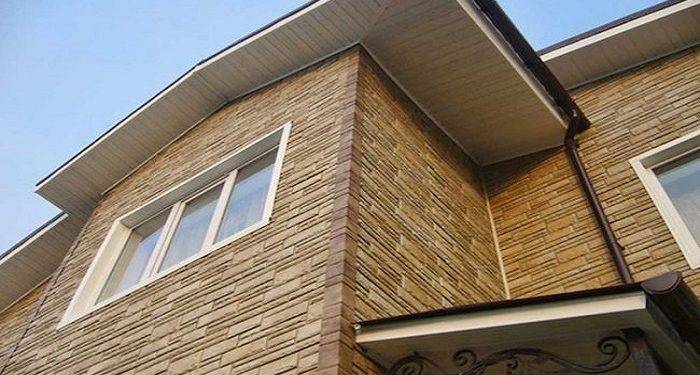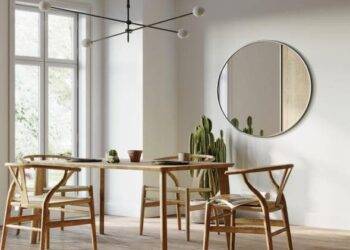The use of facade panels for external cladding of buildings began relatively recently, but due to a successful combination of decorative and operational qualities, it quickly spread throughout the world.
The main advantage of this type of cladding was the high speed of installation work. This property of the material cannot be overestimated, especially with large areas and wall heights.
Today, there are many options for choosing facade panels, their material, and their appearance. All of them have some features and differ from each other, so it is worth considering them separately.
Description of basement siding under stone
Basement siding was created for a certain task – the design of the lower part that protrudes from the soil of the foundation of the house. Because of this, basement siding completely repeats the texture of stone or brickwork – a common situation for wooden houses with a stone foundation.
The difference in the size of the panels compared to the usual types of siding is also caused by the specificity of the plinth cladding (mainly) and the features of the texture of the material. Masonry consists of relatively small fragments, so you can connect panels only along the line of connection of individual decorative elements.
Hence the peculiar shape of the basement siding sheets, which can be assembled into a canvas of any size, but it is difficult to see the joint lines of individual panels even up close.
Pretty soon it turned out that the basement siding is no worse than the usual one when the house is completely finished. The appearance of the cladding is very accurate, stylish, and harmonious.
The variety of types of imitation of natural stone in the assortment makes it possible to turn the facade of an ordinary house into an ancient building, which repeats the appearance of solid houses made of natural stone. This finish radically changes the appearance of the house, leaving its architecture untouched and without requiring large costs.
There are several types of basement siding under stone :
- stone;
- Broken stone;
- granite;
- sandstone;
- Canyon;
- Rocky stone;
- Neapolitan stone;
- Florentine stone;
- Venetian stone, etc.
Advantages and disadvantages of the material
The advantages of basement siding under stone can be recognized as:
- Realistic imitation of natural types of masonry;
- Simplicity of installation work, the ability to do the finishing with your own hands (Or you can arrange the services of a siding contractor);
- More convenient panel sizes for working alone;
- A large selection of textures and colors;
- High operational and decorative qualities of the material;
- Ecological purity of the material, resistance to microbiological manifestations – mold, fungus, algae, etc.;
- The possibility of installation at any time of the year at any temperature.
Disadvantages of the material include :
- The possibility of burning or melting of the material during a fire;
- Relatively high coefficient of thermal expansion, which forces to take certain measures during installation;
- Plastic panels become brittle when cooled and can break under mechanical stress.
To some extent, the disadvantage of the material is the possibility of obtaining an excessively variegated surface of the facade, especially when using multi-colored panels pklikes.com.
Specifications
Basement siding under stones is made by various companies, which affects its technical characteristics. The products of different manufacturers have their own parameters, so the most common values will be displayed or the minimum and maximum values will be indicated.
- Length – from 950 mm to 2000 mm (on order – up to 6000 mm);
- Width – from 450 to 630 mm;
- Thickness – 1.2 mm for plastic samples, 0.8-1 mm – for metal siding;
- Service life – 30-50 years (warranty, practically not confirmed);
- Temperature limits of material operation – from -50 ° to + 60 °;
- The height of the panel relief is 12-25 mm.
Сonclusion
The use of basement siding under the stone will make the facade of the house stylish and give it a unique look. Costs for natural materials are several times higher than when using siding, and the effect is practically the same.
The quality and long service life of the material contribute to the wide spread of this type of cladding among consumers, and easy installation and the ability to perform work independently make basement siding one of the most popular materials.













